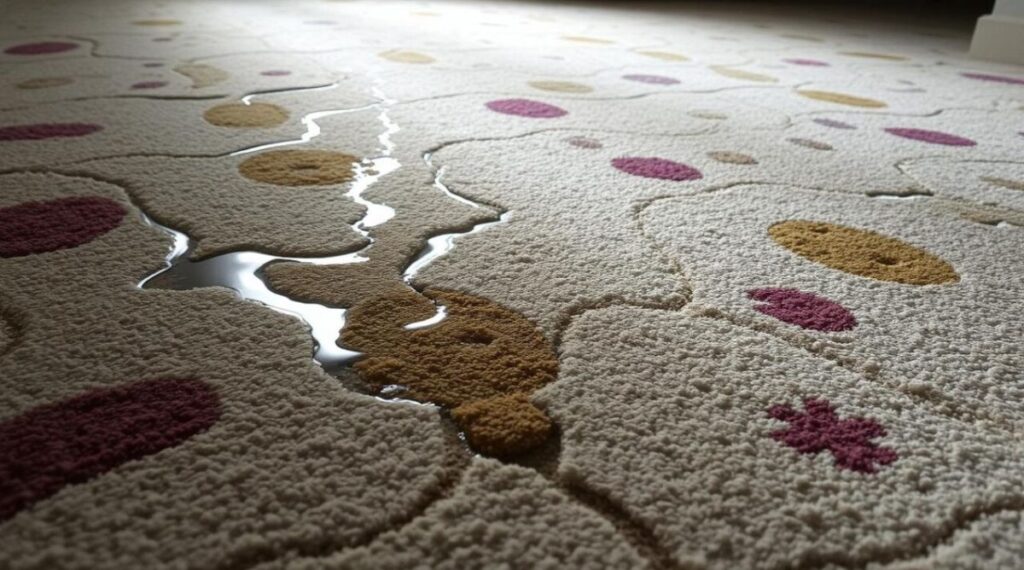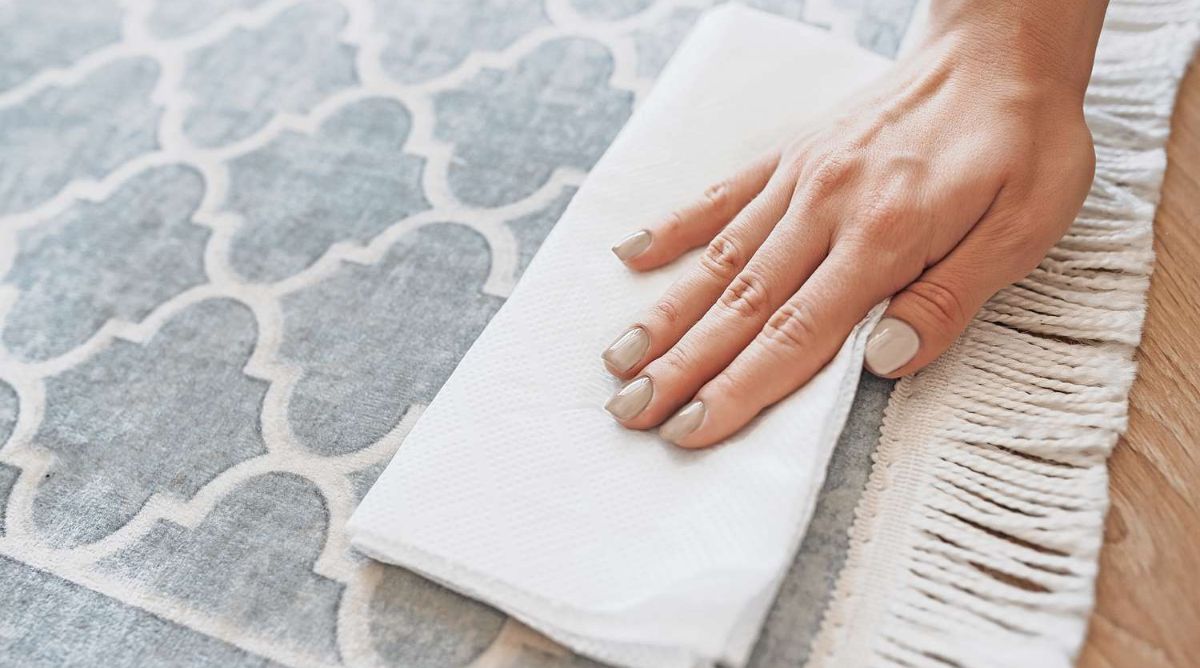Carpet stains, odors, and dirt are inevitable over time, especially in homes with children, pets, or high foot traffic. While there are many commercial carpet cleaners available, a natural and budget-friendly solution that has stood the test of time is cleaning carpet with apple cider vinegar. This method not only offers a powerful way to treat stains and eliminate odors but also avoids exposure to harsh chemicals.
In this article, we’ll explore how apple cider vinegar works as a carpet cleaner, the types of stains it can remove, safety precautions, DIY recipes, and more.
Why Use Apple Cider Vinegar to Clean Carpets?
Apple cider vinegar (ACV) is more than just a kitchen staple. It is widely recognized for its antibacterial, antifungal, and deodorizing properties. Here’s why cleaning carpet with apple cider vinegar is a smart and natural alternative to synthetic cleaners:
- Natural Disinfectant: ACV contains acetic acid, which helps kill bacteria and fungi, reducing allergens trapped in carpets.
- Odor Neutralizer: It doesn’t just mask bad smells—it neutralizes them at the source.
- Stain Removal Power: Whether it’s coffee, wine, pet accidents, or mud, ACV can loosen and lift many types of stains.
- Safe for the Environment and Family: Unlike chemical-laden products, vinegar is non-toxic and safe when used correctly around children and pets.
Types of Carpet Stains Apple Cider Vinegar Can Treat
While ACV is effective on many types of stains, its success depends on the stain’s nature and age. It works best on:
- Pet urine and feces
- Food spills (e.g., coffee, wine, ketchup)
- Mud and dirt tracks
- Mildew or musty smells
- Grease or oil (when combined with baking soda)
Older or set-in stains may require repeated treatments or professional cleaning, but apple cider vinegar is a great first line of defense.
Preparing for Carpet Cleaning with Apple Cider Vinegar
Before you start, gather the following items:
- Apple cider vinegar (raw, unfiltered is best)
- Baking soda (for extra scrubbing power)
- Clean cloths or towels
- Spray bottle
- Warm water
- Vacuum cleaner
- Soft-bristle brush or sponge
Important Note: Always test your cleaning solution on a small, hidden patch of carpet to ensure it doesn’t damage the fibers or color.
How to Clean Carpets with Apple Cider Vinegar
There are several ways to use apple cider vinegar for carpet cleaning. Let’s look at some of the most effective methods.
1. Spot Cleaning Fresh Stains
Steps:
- Blot the stain gently with a dry cloth to absorb excess liquid.
- Mix equal parts of apple cider vinegar and warm water in a spray bottle.
- Spray the solution directly on the stained area.
- Let it sit for 5–10 minutes.
- Blot the area with a clean towel to absorb moisture.
- Repeat if necessary, then allow to air dry.
2. Deep Cleaning with Baking Soda and ACV
For tougher or smelly stains, baking soda and ACV make a powerful duo.
Steps:
- Sprinkle baking soda generously over the stained or smelly area.
- Let it sit for 15–30 minutes (longer for bad odors).
- Mix 1 cup warm water with 1 cup ACV in a spray bottle.
- Spray the mixture over the baking soda. It will fizz—this reaction helps lift stains.
- Let it sit for 15–20 minutes.
- Scrub gently with a soft brush.
- Blot with a towel and let it dry completely.
- Vacuum up the dried baking soda residue.
3. Odor Elimination Treatment
If your carpet has absorbed pet or smoke odors, ACV can neutralize them.
Steps:
- Mix 1 part ACV with 2 parts warm water in a spray bottle.
- Lightly mist the carpet surface (do not soak it).
- Let the carpet air dry completely.
- Vacuum thoroughly.
This method is excellent for regular maintenance and freshening up rooms naturally.
Pros and Cons of Cleaning Carpet with Apple Cider Vinegar

Pros:
- Affordable and widely available
- Safe and eco-friendly
- Eliminates odors naturally
- Effective on various stains
- Gentle on most carpet types
Cons:
- Strong initial smell (fades upon drying)
- May not work on set-in or dye-based stains
- Overuse without rinsing can attract dirt
- Not suitable for delicate or silk-based carpets
Safety and Usage Tips

To get the best results from cleaning carpet with apple cider vinegar, consider these tips:
- Avoid Oversaturation: Too much moisture can damage carpet backing or cause mildew growth.
- Use Filtered ACV: Raw, unfiltered vinegar contains natural enzymes that enhance cleaning.
- Open Windows: Ensure proper ventilation when cleaning to help vinegar odor dissipate quickly.
- Dry Thoroughly: Use a fan or open windows to speed up drying, especially in humid climates.
- Don’t Mix with Bleach: Never combine vinegar with bleach or ammonia—it creates harmful fumes.
Alternatives and Enhancements

While apple cider vinegar is effective on its own, you can enhance its power by combining it with other natural cleaners:
- Lemon juice: Adds citrus freshness and extra antibacterial power.
- Essential oils: Add a few drops of tea tree, lavender, or eucalyptus oil for fragrance and added germ-killing abilities.
- Castile soap: Mix a small amount into your vinegar solution for additional grease-cutting ability.
When to Call a Professional
Apple cider vinegar is an excellent DIY carpet cleaner, but there are situations where professional help is necessary:
- Large or severe stains (blood, paint, tar)
- Water damage or mold
- Delicate carpets (wool, silk, antique rugs)
- Recurring stains or odors
In such cases, a trained carpet technician can use industrial-grade tools and cleaners to restore your carpet’s condition safely.
Final Thoughts
Cleaning carpet with apple cider vinegar is a smart, natural, and cost-effective solution that offers numerous benefits. From neutralizing pet odors to removing everyday stains, ACV is a versatile cleaner that every household should have on hand. With a few simple tools and some DIY recipes, you can keep your carpets looking fresh, smelling clean, and free from harmful chemicals.
For those committed to a non-toxic home environment, incorporating apple cider vinegar into your carpet care routine is a step toward healthier, cleaner living.










